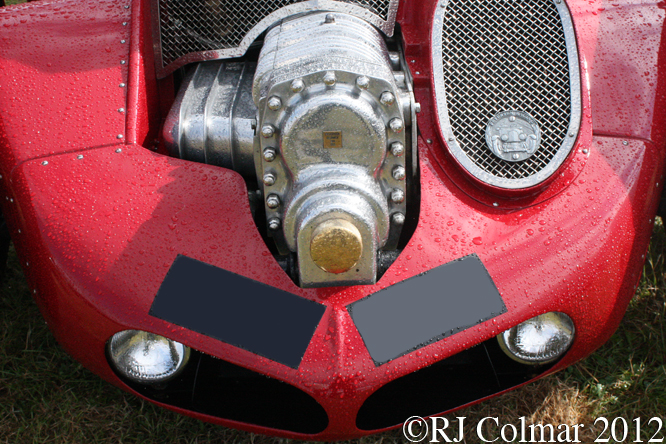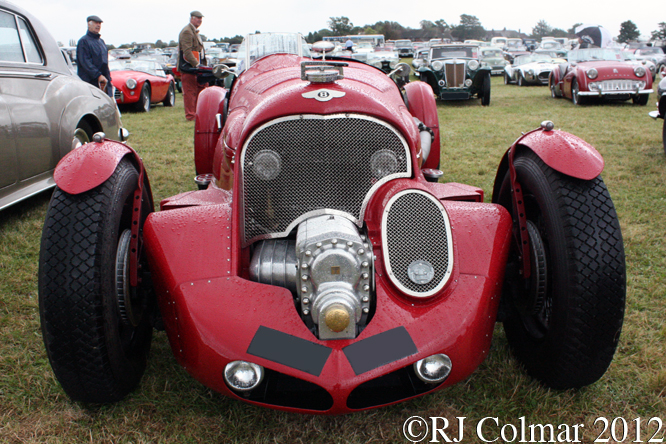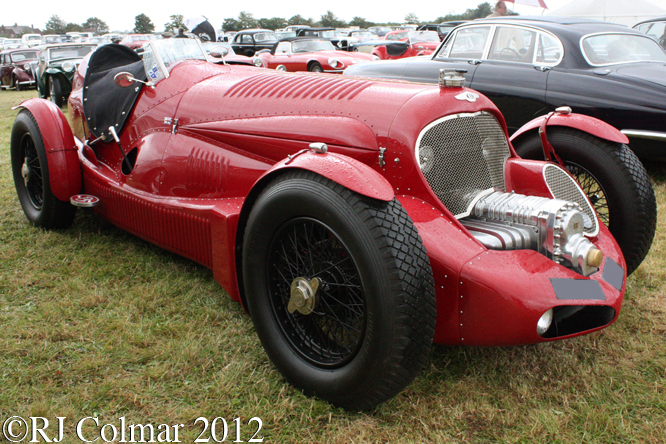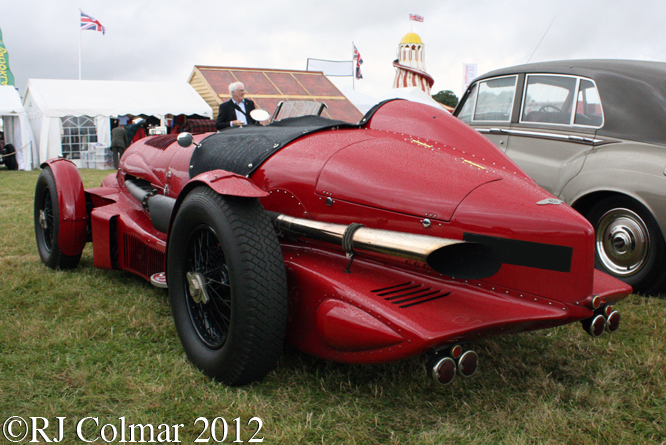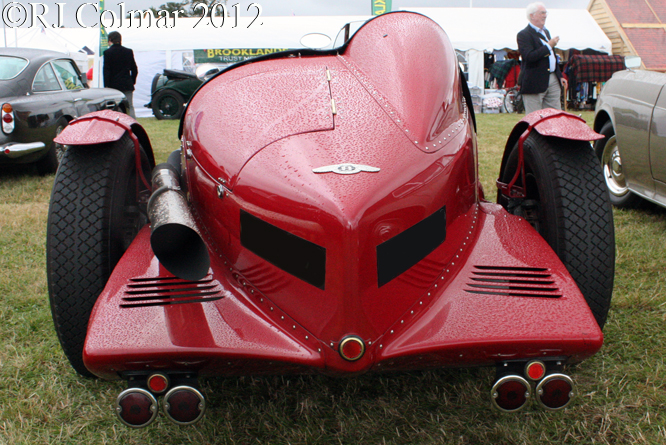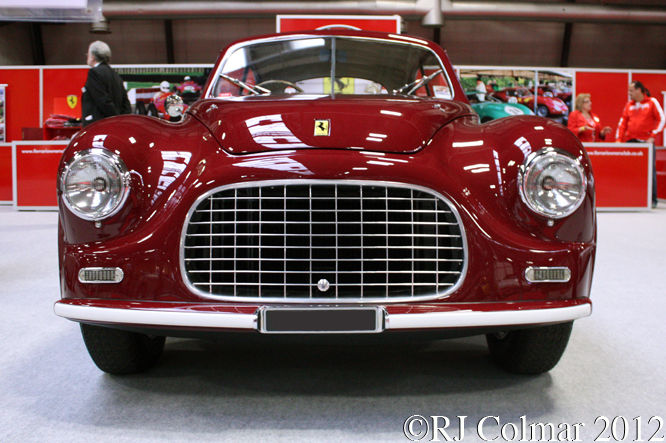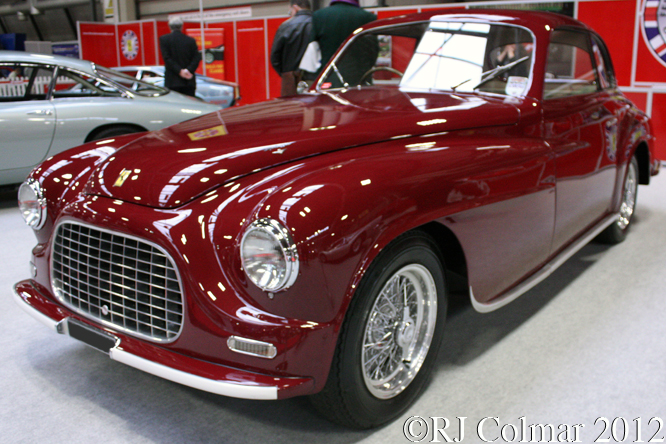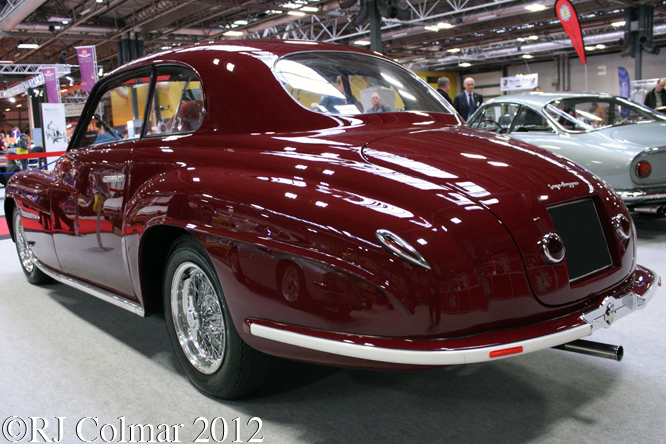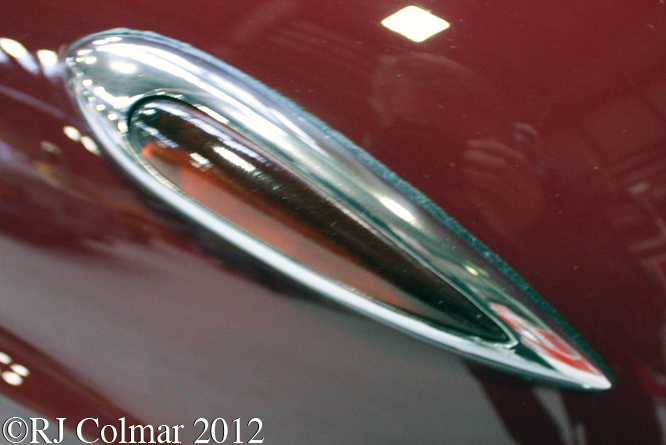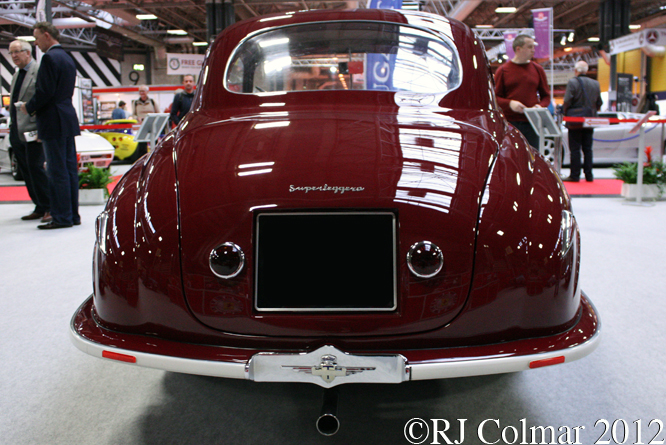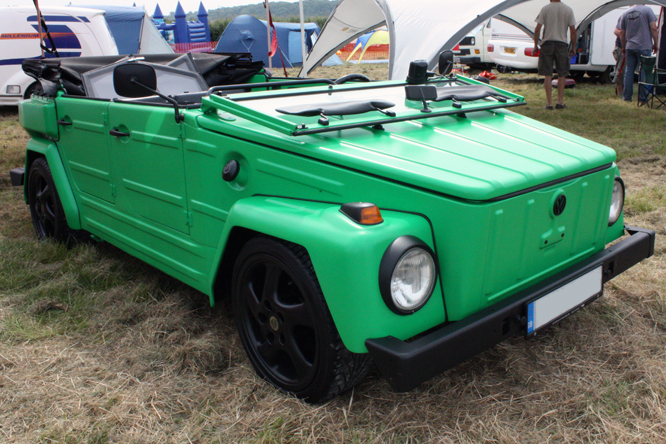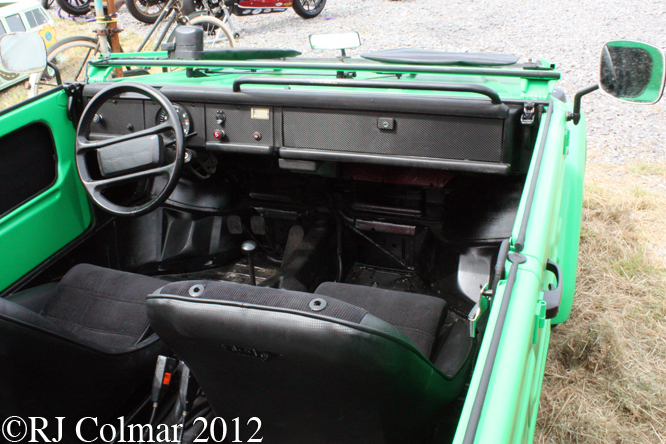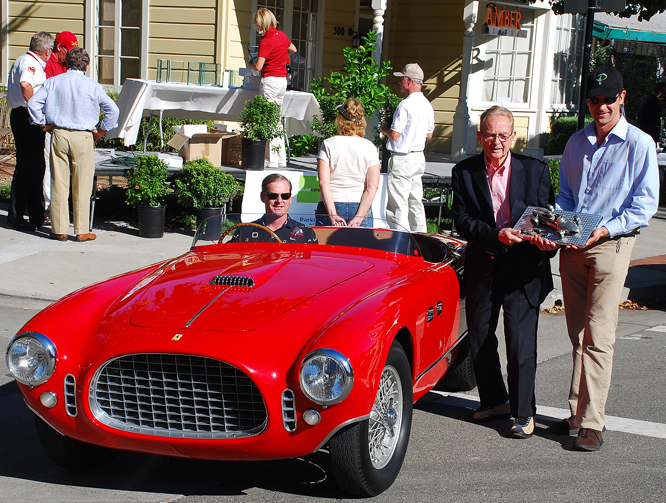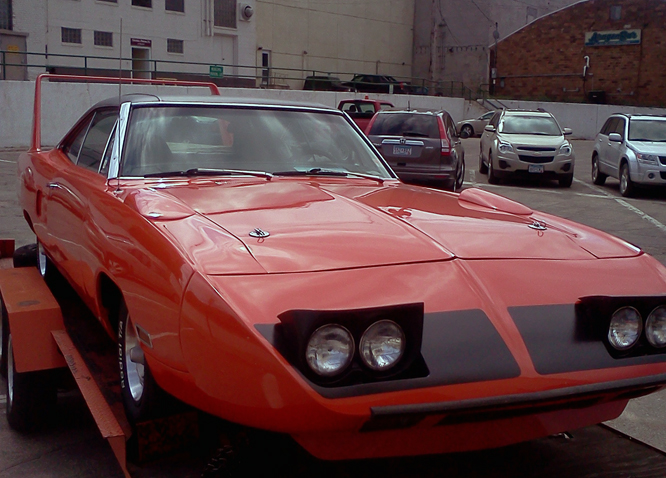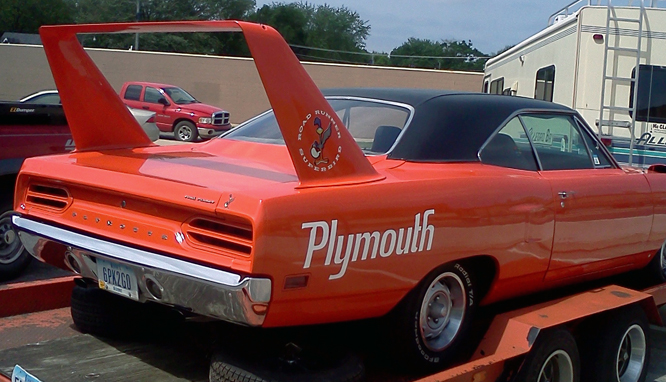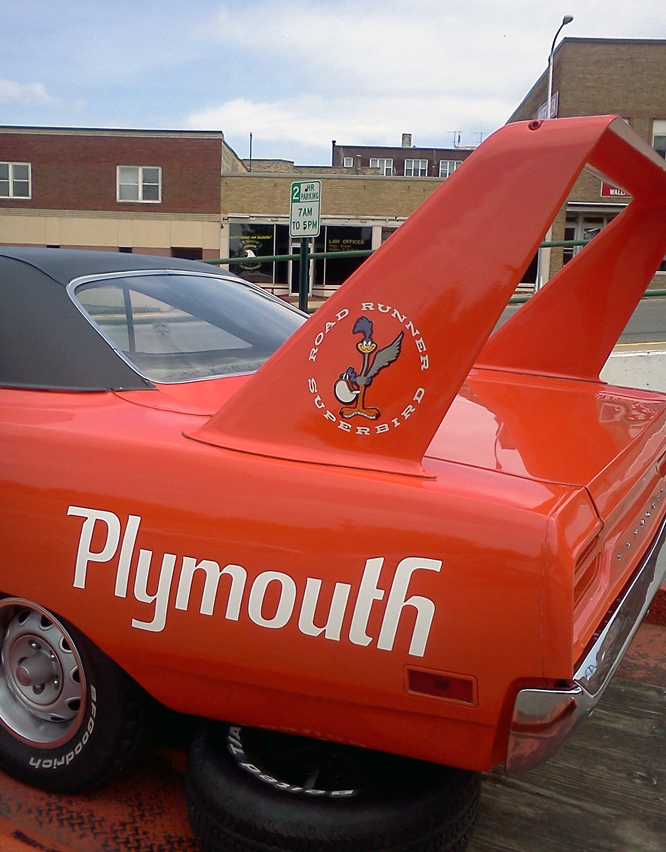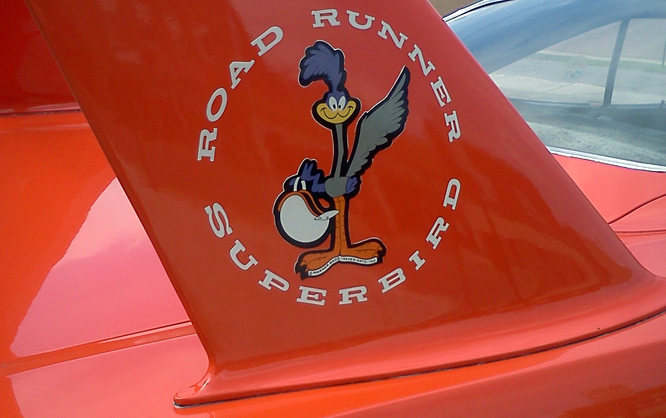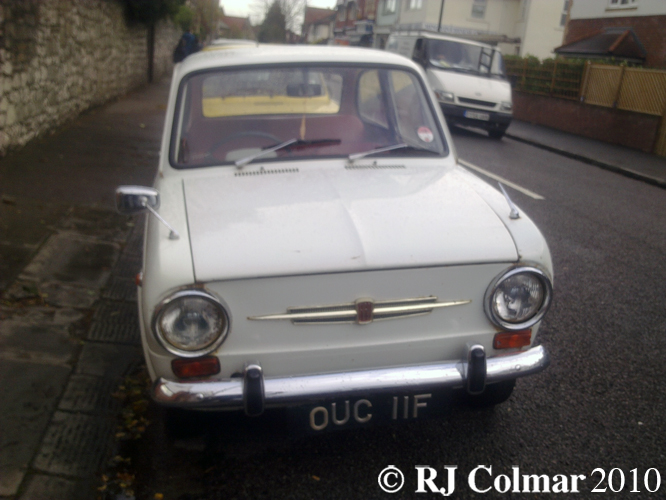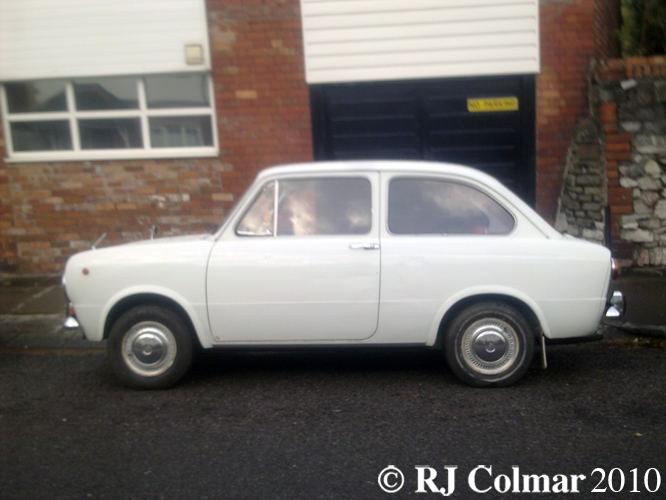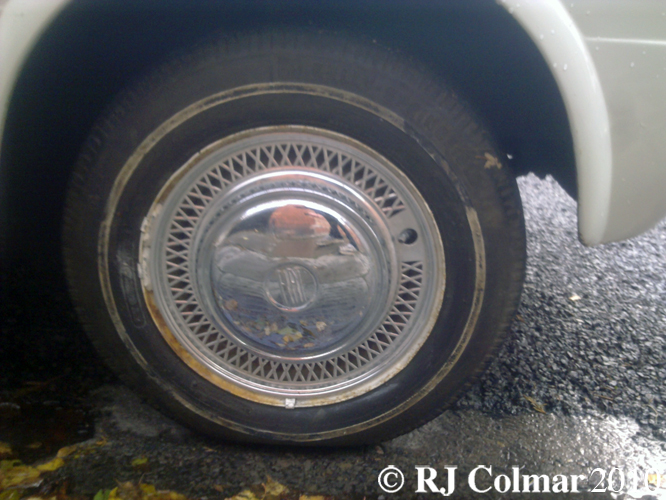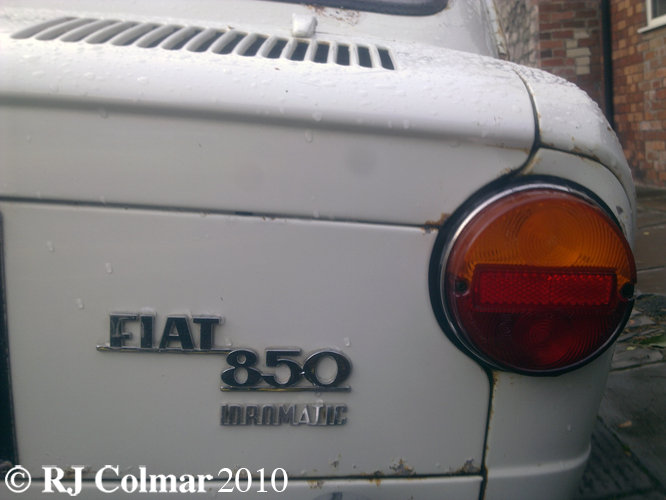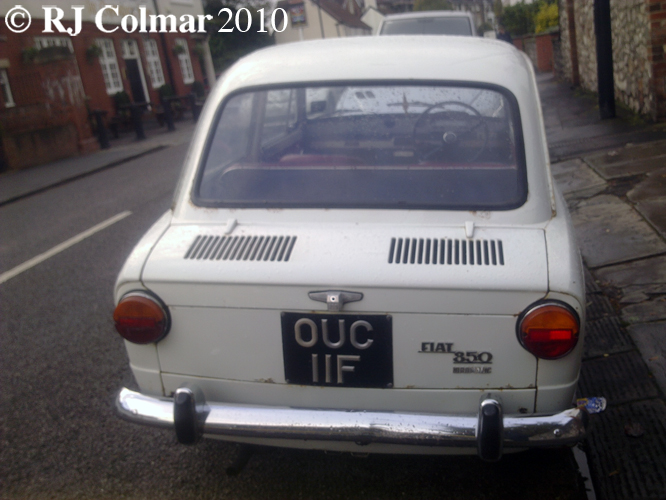At the weekend I took a break from attending the Gold Cup on Monday as in recent years and went on the Sunday, my decision was influenced by slightly larger grids for the races and slightly better weather, I was rewarded with a short lie in and a great day’s racing which kicked off when Tim Murray and I visited the press office where we were greeted with a warm welcome and great cup of coffee by friends made over several years on The Nostalgia Forum.
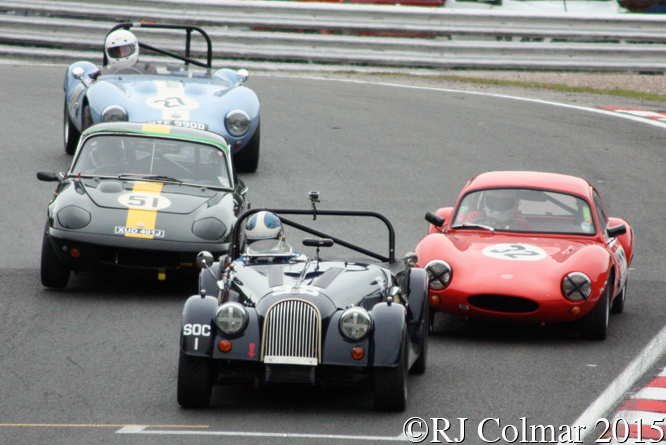
After a quick visit of the pit area we made our way to Deer Leap for the 10 lap Oni Plc Historic Road Sports race which was led on the opening lap by front row starter Kevin Kivlochan in the #98 Morgan Plus 8 seen above already in second place on lap two. Pole starter Julian Barter driving the #51 Lotus Elan S4 completed the opening lap in 4th but recovered to relieve the races second leader Roger Waite in another Lotus Elan on lap 5, the red #32 Ginetta G4 driven by Patrick Ward Booth finished 3rd ahead of Kevin’s Morgan and the blue #27 Ginetta G4 driven by Dave Boland.
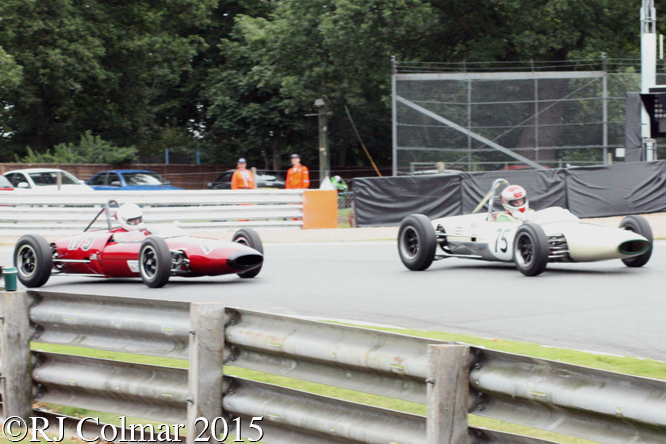
We moved to the inside of Lodge for the next couple of races. Above Peter Moreton had an electric opening lap in the first of the two Silverline Historic Formula Junior races leading the field from 4th on the grid in his #75 Lightening Envoyette, front row starter Andrew Hibberd in the #179 Lotus 22 completed the opening lap in third and is seen above lining up to relieve Peter of the lead for good at the end of lap 3, John Fyda driving a Brabham BT6 finished second ahead of Peter with less than 6 seconds covering the top three after 20 mins of close racing.
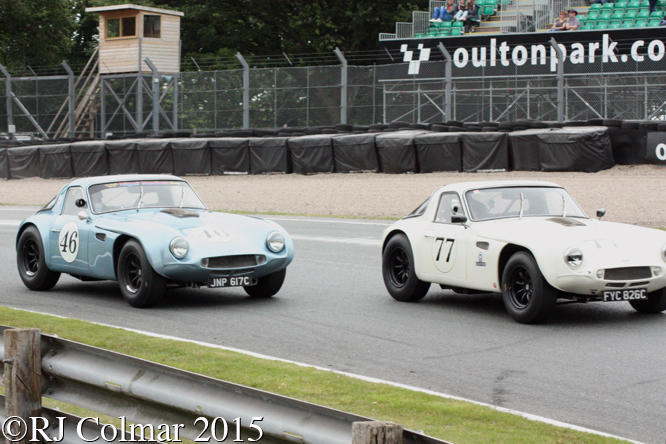
Mike Gardiner and Dave Cox qualified their #77 TVR Griffith on pole for the HSCC Guards Trophy supported by Dunlop Tyres GT Race but there was no stopping Mike Whitaker in the similar #46 TVR seen above about to take the lead at the end of the 2nd lap which he would hold onto until pitting on lap 11 handing over the lead to the similarly Ford 289 powered AC Cobra driven by Robert Bremner. After the pit stops had cycled through Mike Whitaker led until the end of the race ahead of the Gardiner / Cox TVR and Robert in the over steering (loose) AC.
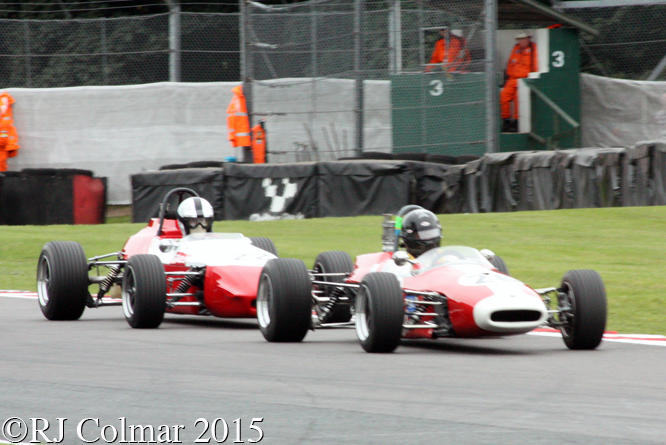
By the end of the 40 min GT race Tim and I had made our way over to the inside of Old Hall from whence we watched the start of the first of two The Cubicle Centre Historic Formula 3 races. Fourth place starter Steve Seaman in his #26 Brabham BT21 nipped through to lead the opening 4 laps of this race from pole man Simon Armer driving the #22 March 703 who is seen above about to pass Steve to claim the lead which he held onto to take the flag a gnats over 17 seconds ahead of Micheal Scott’s Brabham BT28. Steve came home forth behind clear championship leader Leif Bosson driving another Brabham BT28.
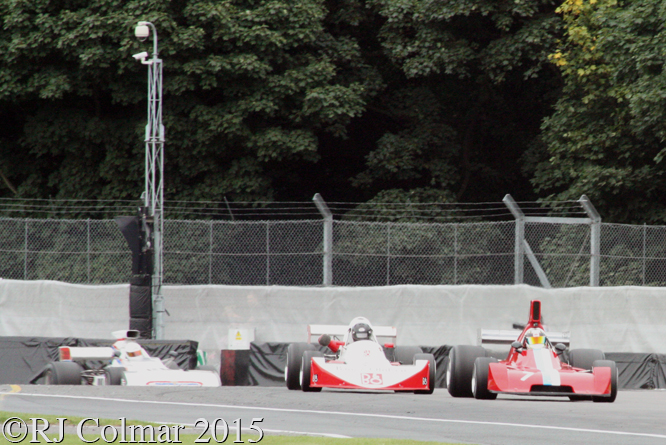
One of the highlights of the weekend was seeing Neil Glover driving the one off 5 litre / 302 cui 1976 Chevron, celebrating it’s fiftieth anniversary this year, B37 F5000 car which he qualified second for the first of the weekends Derek Bell Trophy races behind the 2 litre / 122 cui 1974 March 742 Formula 2 car driven by Mark Dwyer. Neil snatched the lead for the opening 3 laps of the race with Mark snapping at his heals in the nimble March who finally grabbed the lead on the third lap and pulled out a nearly six second advantage when a major incident between Denton’s and Cascades required the red flag to be shown on the 8th lap.
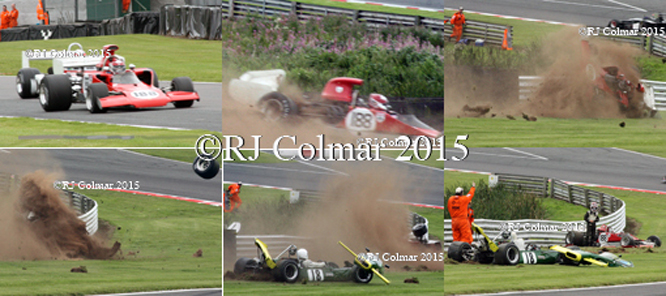
5th place starter 67 year old former Grand Prix driver Ian Ashley driving the #188 Lola T300 Formula 5000 car came down the chute between Denton’s and Cascades for the 8th time in 4th place behind the Clubmans Mallock driven by Mike Charteris when he came across a hapless lapped Brian Cullen driving a 1970 1600 cc Formula 2 spec #18 Crosslé 19F. Just after the Denton’s right hand kink Ian clipped the left rear wheel of the Crosslé with his right front and went flying down the track until his rear end hit the retaining barriers which sent the car into a barrel roll before landing on it’s right side and then came to rest miraculously the right way up. Fortunately Ian was able to release himself from the remains of his Lola unaided and gave spectators a thumbs up to a good dose of applause, neither driver suffered any injury that I know of.
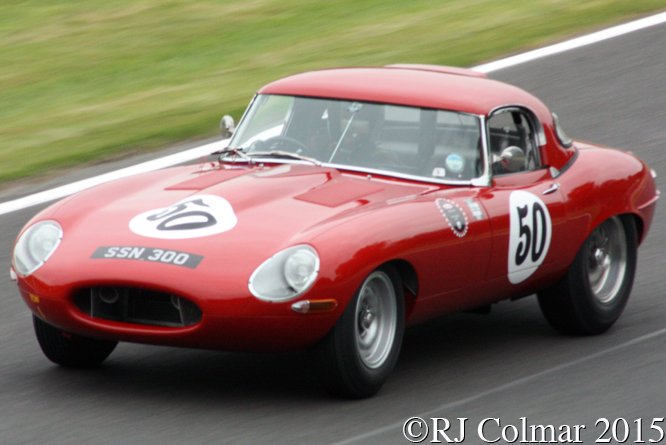
After the dramatic low’s and high’s of the incident the 40 min Jaguar Heritage race passed by in relative tranquility. The third place starting #50 E-type of Michael Wilkinson and John Bussel took over a commanding lead with 6 laps to go, when Martin O’Connel’s pole winning E-type retired 1 lap after his compulsory pit stop, to finish over a minuet and a half clear of Paul Castaldini who was just third placed pairing of Dave Coyne and Robert Gate who made it an all E-type podium as several of the cars struggled to the end with smoking brakes, exhausts and or transmissions.
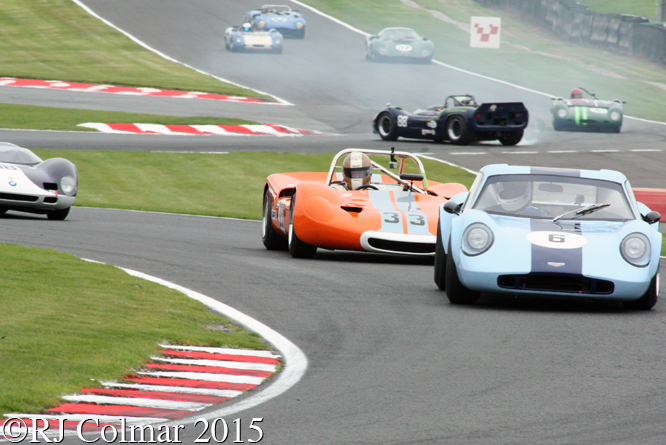
Normal service returned with the Guards Trophy supported by Dunlop Tyres Sports Racing cars race. On the opening lap 5th place starter Jon Waggitt was the man on the move with the #33 Lenham P69 seen here followed by the pole sitting and eventual winning #18 Elva Mk 7, driven by Maxim Bartel and Callum Grant, ready to pounce by the front row starting #6 Chevron B6 driven by Nick Thompson and Sean McClurg. Jon kept the lead for all of two laps before the #18 reasserted qualifying form and went on to win the 40 min race by over 8 seconds from the #33 Lenham that Jon shared with Peter Needham that finished a further 5 seconds ahead of the Chevron B8 driven by Charles Allison. In the back ground seventh place starter Marcus Mussa spins his #88 McLaren Elva M1B going into the Hislops chicane.
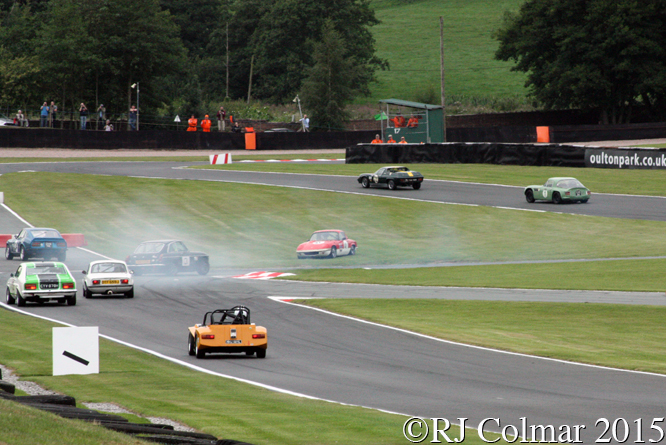
The 20 min 70’s Road Sports Bob Trotter Celebration Race may have been shorter than some, but provided the most closely contested victory as second place starter Jim Dean made the running over the first five laps in his little green #72 Lotus Europa, eventual winner, by just .089 of a second, was Charles Barter whose powerful blue #24 Datsun 240Z started 3rd but had to take to the escape road going into Hislops on the opening lap in order to avoid the spinning 5th place starting Lotus Elan driven by Iain Daniels. Jim finished 2nd just under 5 seconds ahead of the light green #1 TVR Tuscan driven by Peter Shaw.
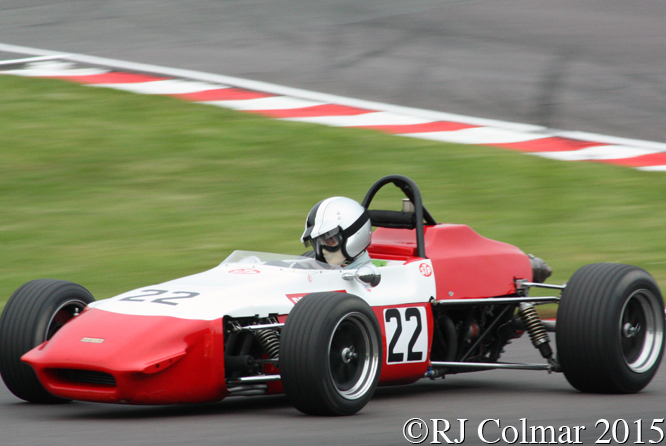
The starting grid for the second Cubicle Centre Historic Formula 3 race was exactly the same as the first, unusually the finishing order of the first race played no part in the starting order for the second, once again it was third place starter Steve Seaman in the Brabham BT21 who went into the lead on the opening lap, but this time he held onto it until lap 6 before a determined Simon Armer found away past for the final two laps of the race which he finished just over half a second ahead of Steve and nearly 8 seconds ahead of Michael Scott.
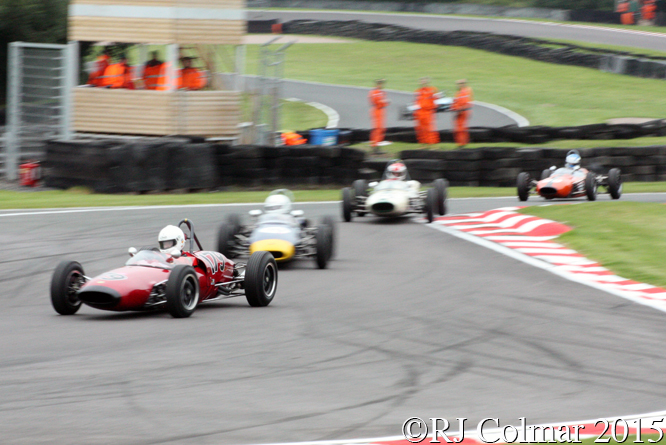
The grid for the final race of the day, second Silverline Historic Formula Junior race was determined by the finishing order of Junior race one, but pole sitter Andrew Hibberd finished the opening lap in third as the electric Peter Moreton again led with John Fyda between them. Andrew is seen above having just taken the lead from Peter who was demoted to third as John followed Andrew to take second on lap 3. The order remained the same until the end of the race with the top three again finishing less than six seconds apart with plenty of entertaining battles through the field to keep the results uncertain until the very end of a great day’s racing.
Thanks for joining me on this “Ian’s Great Escape” edition of “Gettin’ a li’l psycho on tyres” I hope you will join me again tomorrow when I’ll be visiting the Rolex Monterey Motorsports Reunion. Don’t forget to come back now !


